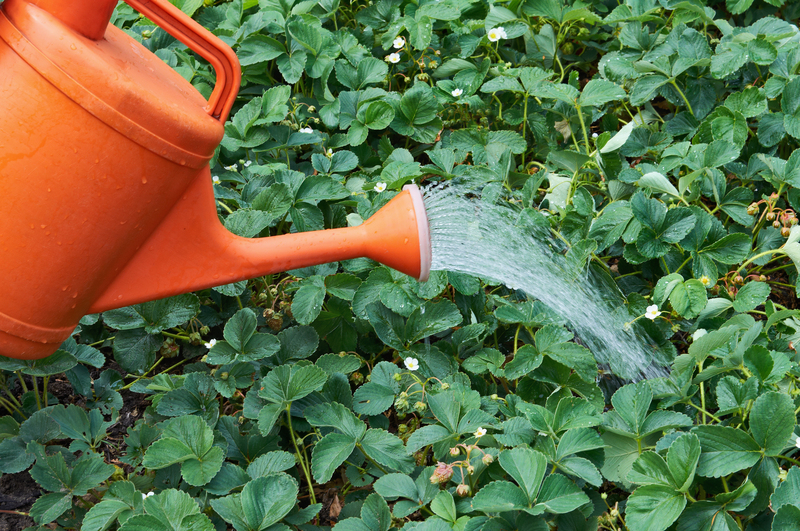Make gardening a fun and educational family activity
Posted on 25/06/2025
Make Gardening a Fun and Educational Family Activity
Family time is invaluable in today's fast-paced world. If you're searching for a meaningful way to bond, spark curiosity, and instill life skills, look no further than your own backyard. Making gardening a fun and educational family activity can transform your outdoor space into a green classroom full of adventure, discovery, and joy. In this guide, we'll explore a variety of ways to turn gardening into an enriching, memorable experience for all ages.

Why Choose Gardening as a Family Activity?
Gardening is so much more than planting seeds. By engaging in gardening as a family activity, you promote teamwork, patience, and a lasting appreciation for nature. Here are just a few reasons why gardening is perfect for family bonding:
- Educational Value: Kids discover science, biology, weather patterns, and healthy eating habits.
- Physical Benefits: Digging, planting, and weeding keep everyone active and healthy.
- Emotional Reward: Watching a seed grow into a flower or vegetable boosts confidence and provides a sense of accomplishment.
- Environmental Awareness: Children learn firsthand about sustainability, pollinators, and taking care of the planet.
- Screen-Free Fun: Gardening offers an excellent excuse to unplug together and enjoy the natural world.
Ready to cultivate memories? Here's how you can make gardening an enjoyable and educational experience for your entire family.
How to Start a Family Gardening Project
1. Plan Together: Involve Everyone from the Start
Kick off your family gardening adventure by inviting each member to participate in the planning process. Discuss what vegetables or flowers to grow, where to place your beds, and how you'll share the work. Encouraging input from all ages makes the project exciting--and ensures everyone feels invested in the outcome.
- Let kids choose their favorite plants or flowers.
- Browse gardening catalogs or online resources as a family.
- Sketch out your garden design together--be creative!
2. Create a Kid-Friendly Garden Space
If your goal is to make gardening fun for children, think from their point of view. Kids love spaces they can call their own! Set up a special raised bed, colorful pots, or even a container garden on the patio. Keep breakable tools and sharp-edged equipment away, and choose child-sized tools for safety and comfort.
- Install stepping stones or small paths for little feet.
- Paint plant markers or rocks to add splashy color.
- Incorporate whimsical elements like a fairy garden, a scarecrow, or wind chimes.
3. Choose Easy-to-Grow, Fast Results Plants
Kids thrive on success! Opt for plants that sprout and grow quickly to maintain interest. For a successful start to your family gardening project, consider:
- Sunflowers
- Radishes
- Lettuce
- Peas
- Cherry tomatoes
- Marigolds
- Zinnias
These options offer rapid rewards, vibrant colors, and easy harvesting.
Educational Opportunities in Family Gardening
Turning gardening into an educational family activity comes naturally. The process teaches valuable lessons across multiple subjects:
Science in Action
Discuss the plant life cycle as you sow seeds, watch them sprout, and see flowers or vegetables develop. Let kids observe and journal changes in the garden each week. Ask questions like:
- What do plants need to grow (sun, water, soil)?
- How does weather affect our garden?
- What insects do we see--and which ones help our plants?
Learning Responsibility Through Gardening
Assign each family member a gardening task, like watering, weeding, or harvesting. Taking on responsibility helps children develop time management, accountability, and pride in their work.
Math Made Fun
Counting seeds, measuring soil depth, and tracking plant growth offer real-world math practice. Ask older kids to research how much space certain plants need and create a scale drawing of your garden plot.
Understanding Nutrition and Healthy Eating
There's no better way to teach kids about healthy eating than by letting them grow their own food. Show them how carrots, peas, and tomatoes make their way from garden to table. Encourage tasting, cooking, and sharing recipes featuring their harvest.
Environmental Stewardship
A family garden is a hands-on lesson in sustainability. Discuss composting, organic gardening, conserving water, and creating habitats for pollinators like bees and butterflies. These early lessons nurture a respect for the earth that will last a lifetime.
Making Gardening Fun: Creative Ideas for Family Involvement
To ensure gardening is enjoyable for everyone, vary the activities, celebrate successes, and emphasize teamwork. Consider these creative approaches to maximize fun and learning:
Themed Garden Beds
Create beds based on themes the family enjoys:
- Pizza Garden: Grow tomatoes, peppers, basil, and onions.
- Pollinator Paradise: Plant milkweed, lavender, and cosmos to attract butterflies and bees.
- Sensory Garden: Include fragrant herbs, fuzzy lamb's ear, and colorful flowers.
Garden Crafts and Projects
- Build birdhouses or pollinator hotels.
- Paint decorative plant markers or rocks.
- Create stepping stones with handprints.
Garden Journals and Nature Scrapbooks
Let children illustrate and record their observations. Glue in pressed flowers, draw insects, and jot down harvest yields. Garden journals make wonderful keepsakes!
Harvest Celebrations
When crops are ready, host a family dinner or picnic using garden produce. Celebrate everyone's hard work and discuss what you learned together.
Essential Tips for a Successful Family Gardening Experience
Keep these tips in mind to make gardening as a family rewarding and stress-free:
- Start small -- it's better to have a tiny plot everyone enjoys than a giant garden that feels overwhelming.
- Schedule regular garden days and make them an anticipated event.
- Visit farmers' markets, community gardens, or botanical gardens for inspiration and education.
- Let kids get messy! Gardening is about hands-on discovery.
- Be patient--gardens, like children, thrive best when given time and attention.
Adapting Gardening Projects for All Ages and Abilities
You don't need a huge backyard or prior experience. Gardening is a flexible family activity suitable for all living situations and skill levels:
- Apartment dwellers: Try container gardening on balconies or windowsills. Herbs, small tomatoes, and microgreens are perfect for compact spaces and deliver quick results.
- Special needs & accessibility: Raised beds or vertical gardens make gardening accessible for family members with mobility challenges. Adaptive tools and comfortable seating can help everyone participate.
- Teen involvement: Older children may enjoy advanced projects like composting, designing irrigation systems, or researching eco-friendly gardening methods. Challenge them to grow something unique or take on leadership for a part of the family garden.
Seasonal Gardening Activities for Families
Keep gardening as a family activity fresh and exciting year-round with these seasonal suggestions:
Spring
- Start seeds indoors.
- Plan and prepare garden beds together.
- Look for earthworms and talk about soil health.
Summer
- Plant warm-weather crops and flowers.
- Make a "harvest chart" for picking fruits and vegetables.
- Explore pollinators and insects with a magnifying glass.
Autumn/Fall
- Plant bulbs for spring flowers.
- Rake leaves and add them to a compost pile.
- Dry flowers or herbs for winter crafts.
Winter
- Plan next year's garden and order seeds as a family.
- Sprout herbs or microgreens indoors on a windowsill.
- Create garden crafts like homemade seed bombs or bird feeders.
Exploring Garden-Based Learning Beyond the Backyard
You can extend family gardening activities into the community and classroom:
- Community Gardens: Volunteer together at a neighborhood garden to learn new skills and make friends.
- School Programs: Encourage school involvement in garden-based curriculum. Volunteer, donate seeds, or help start a school garden club.
- Library and Extension Events: Many libraries and local organizations host family gardening workshops and classes on topics from composting to native plants.
Gardening Challenges and How to Overcome Them
Like any activity, family gardening may come with roadblocks. Here's how to tackle common challenges:
- Lack of Interest: Let children choose what to plant, or add fun elements like discovery hunts for bugs or treasures.
- Time Constraints: Pick low-maintenance plants and dedicate just half an hour per week as a family gardening session.
- Weather Issues: Garden indoors with windowsill herbs, hydroponics, or terrariums.
- Limited Space: Overcome small yards with vertical, container, or pallet gardening.

Life Lessons Gained from Family Gardening Activities
Integrating gardening into your family's routine helps children and adults grow beyond horticultural skills. Important takeaways include:
- Patience and Perseverance: Seeing results in the garden takes time and care.
- Problem-Solving: Dealing with garden pests, weather, and mistakes builds resilience.
- Teamwork: Working together cultivates cooperation and listening skills.
- Love for Nature: Direct experiences in the garden encourage environmental stewardship.
- Lifelong Curiosity: There's always something new to discover in the garden!
Final Thoughts: Planting Seeds for Lifelong Learning and Family Memories
Making gardening a fun and educational family activity is a rewarding way to connect, learn, and grow together. Whether your family plots a sprawling backyard or tends herbs on a windowsill, every seed you plant is a valuable investment in your children's future--and in the health and joy of your whole family.
So grab your gloves, dig in the dirt, and start cultivating more than just plants--start nurturing family bonds and a lifelong love of learning today!

